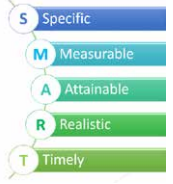migration
I. MIGRATION TYPES
1. Regular migration
Regular migration is when someone possesses all needed legal documents and a valid visa, granted by an embassy, to enter the foreign country they want to migrate to.
Regular migration includes:
- travelling with a visa & proper documents
- applying & receiving a scholarship or funding before you leave
- planning your trip well
- entering the country legally

More information can be found in this APP under the VISA section and if online check the link below:
EU_MIGRATION & ASYLUM
2. Irregular migration = back door migration
Irregular migration is when someone does NOT have the legal documents needed and does NOT have a valid visa, granted by an embassy, to enter the foreign country they want to migrate to.
Dangers of migrating irregularly:
- Human traffickers take all your money.
- You are sold into slavery by traffickers.
- You drown at sea.
- You die of hunger and thirst in the desert.
- You die at the hands of smugglers.
- You die from harsh weather & environmental conditions.
- You end up in prison.
- Your loved ones die or go missing.

Information on irregular migration:
- There is no visa lottery for Germany.
- One cannot obtain any form of visa, including tourist visas, once you’ve entered a country illegally. You have to obtain a visa BEFORE you arrive.
- Everyone that enters Germany without the right documents will be noticed by border control officials. There is no way to sneak into the country.
More information online
Listen to our podcast and real life experiences on migration issues:
II. IMMIGRATION TYPES
1. Refugee
- A refugee is someone who is displaced from their home due to persecution or violence experienced as a result of race, religion, nationality, membership in a particular social group, or political activity.
- The definition of who qualifies and who does not qualify is defined and governed by the UN-convention and protocol relating to the status of refugees.
- International rules and regulations state that everyone has a right to seek asylum from persecution.
- BUT! Even if you are escaping a war-torn country or other catastrophe, it does NOT always make you a refugee in the eyes of international law.
- You can be living in very difficult situations, but will still NOT be considered a refugee if your county is considered safe (based on an official list of safe and unsafe countries).
- Applying for refugee status is a very long and difficult process.

2. Asylum seeker
- An asylum seeker is someone who is requesting international protection in another country, but their claims have not yet been verified and processed.
- An asylum seeker is requesting to be legally classified as a refugee.
- National and regional asylum systems are in place to determine who qualifies for international protection.
- You can only apply for asylum in one country and the rules are very strict about which country you have to apply to. You cannot choose your country.
- Asylum is granted only to people who prove they are affected by conditions of war, persecution, and violence (as defined by United Nations protocol).
- Personal situations, such as pregnancy or violence based on personal relationships, are not valid reasons to seek asylum.
- Wanting to leave the country in search of a better job also does not qualify you for asylum, even if your situation in your home country is very difficult.

III. SMART MIGRATION
If you are thinking about migrating, take time to think about it carefully. Before making any decision, it is very helpful to think about what your goals are.
What outcome or result are you hoping for?
One tool that can help is thinking about SMART goals. SMART stands for:

1. S = Specific
A specific goal will answer the five “W” questions:
- Who: Who is involved? Just you? You and your family? Are other people offering help?
Can you trust them? Do you have other options? - What: What are the requirements? What do you need to be successful? What resources (like time, money, health, legal papers, etc) do you need? What are the realistic job prospects? What are the educational prospects? What are the pros and cons of migrating and not migrating? Think through both the good and the bad.
- When: When do you have to decide about migrating? By when would you need to apply for a visa or other documents?
- Where: Where do you want to go? Do you know the place? The language? The culture?
- Why: Why do you want to migrate? Be sure to have a very clear reason. Is this the best thing for all people involved?
Are there other options at home that could also lead to a positive outcome?
2. M = Measurable
- How will I track my progress?
- How much time do I need it?
- How much of a resource (time, money, energy) do I need?
- What are some mini-goals I can set along the way?
3. A = Attainable
- Is this goal realistic?
- Can the goal be reached? How?
- Are there other paths to reaching my goal? What are they?
4. R = Realistic
- Does this goal seem worthwhile?
- Have I assessed and compared all of the potential risks and losses?
- Are there better, safer ways of arriving at the same goal?
IV. HUMAN TRAFFICKING
1. What is human trafficking?
- Human traffickers and smugglers provide false information about migration in order to make money for themselves. They do not care about the people they are smuggling. Working with traffickers and smugglers is very dangerous.
- Traffickers and smugglers often target unemployed youth. They advertise their business in schools, religious centers, and neighborhoods.

2. What to know about human trafficking
Things to know:
- Smugglers use social media and chat groups to spread malinformation.
- Human traffickers are criminal groups and are very dangerous.
- They lie about promising to escort migrants during the journey, having connections along the route, and being able to get fake travel documents, such as passports or visas. These are all lies.
- Human traffickers and smugglers intentionally circulate misinformation, half-truths, and avoid discussing unpleasant possibilities, danger, or risks. They share fake photos and videos that pretend to show happy, rich migrants living in Europe. These photos are edited and not real!
- Often migrants that have arrived in another country also send misinformation home. They send edited images of success and do not honestly talk about how dangerous or difficult life is, because they want to appear successful. This misinformation makes other people think they need to migrate. Beware. Even from people you know, information is often not accurate.
- Anything that sounds too good to be true, is too good to be true. Promises of getting you to Europe, or promising a well-paying job – these are all false promises.
